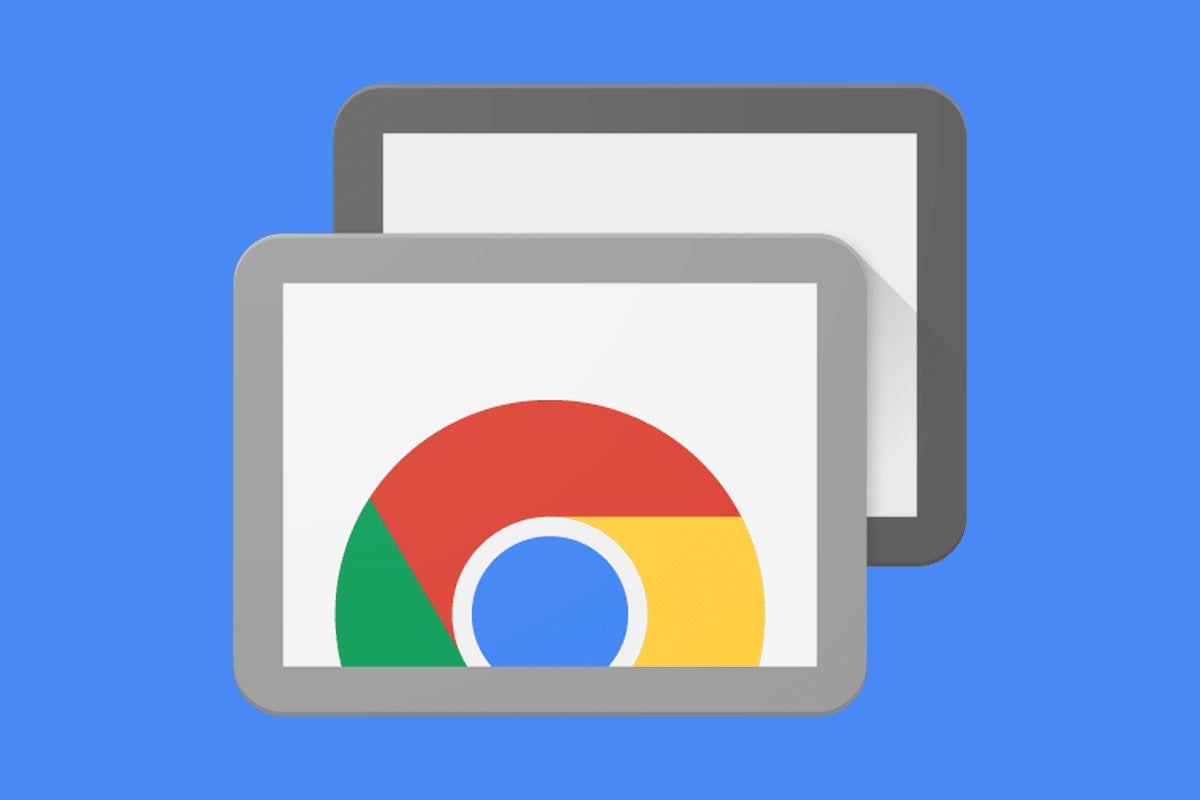Once upon a time, in a world not so far away, accessing a computer remotely required all sorts of costly, complicated software and technical know-how.
These days, it’s a different story. Google’s free Chrome Remote Desktop service makes it dead-simple to get on any computer — Windows, Mac, Linux, or ChromeOS — from practically any other desktop or mobile device. You can access all of the remote system’s contents and even click around as if you were sitting right in front of it.
Chrome Remote Desktop can be useful for signing into your own personal or work computer from afar, and it can be equally valuable for peeking in on someone else’s system — be it your co-worker’s or your mother’s — to provide hands-on help without having to be in the same location.
And best of all? Getting the service up and running is easy as can be. In fact, all you need to do is decide what type of connection you want and then complete a couple quick steps, and you’ll be remotely connecting like nobody’s business.
(Note that Chrome Remote Desktop might not work with company-managed Google Workspace accounts. In that scenario, it’s up to the IT department to decide.)
Using Chrome Remote Desktop to access your own computer
Step 1: Prepare the computer for connections
If you want to be able to access your own computer from another desktop or mobile device, start by opening up Chrome on the host computer (or downloading and installing Chrome, if you’re using a Windows, Mac, or Linux system that somehow doesn’t already have it).
Within Chrome, navigate to the “Remote Access” section of Google’s Chrome Remote Desktop web app and click the circular blue arrow icon inside the box labeled “Set up remote access.” (If you see a blue button labeled “Turn On” instead of a blue arrow, congratulations: You’re one step ahead! Skip the next paragraph, and you’ll be back on track.)
You’ll then be prompted to download the Chrome Remote Desktop extension. Follow that prompt, then click the blue “Add to Chrome” button on the page that pops up and confirm you want to proceed. Once that’s finished, go back to your original tab and click that same “Turn On” button we mentioned a moment ago. If you still don’t see it, refresh the page, and it should appear.
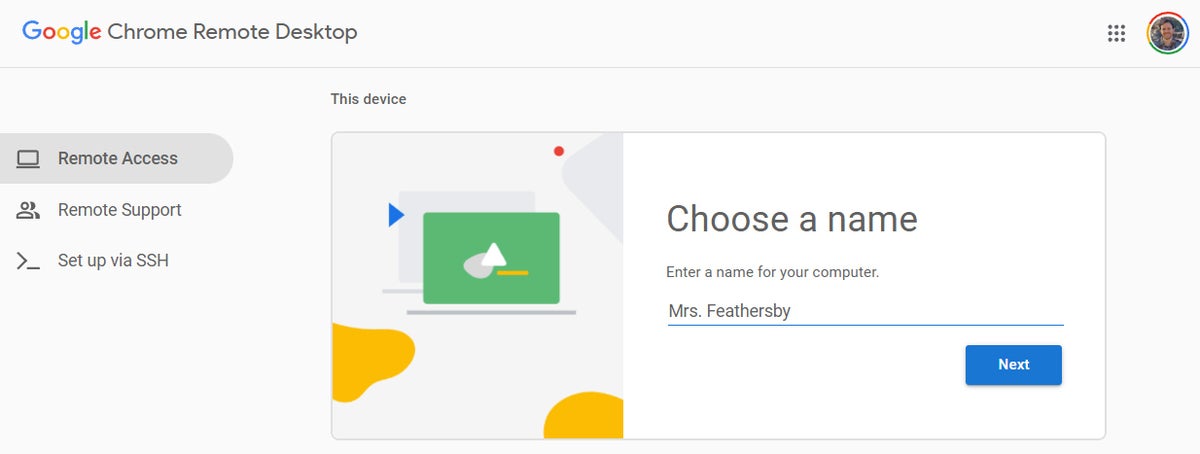 JR Raphael / IDG
JR Raphael / IDGYou can give your computer any name you want, so long as you’ll recognize it. (Click image to enlarge it.)
Once you’ve given the computer a name and clicked the “Next” button, you’ll be prompted to create a PIN with at least six digits. For security purposes, you’ll need that PIN — in addition to being signed into your Google account — in order to access the computer remotely. (Google says all Remote Desktop sessions are also encrypted for extra protection.)
And that’s just about it: Your operating system may pop up a warning making sure you want to allow the app access to initiate a remote connection (and some versions of macOS may additionally require you to grant a couple permissions to Chrome Remote Desktop in System Preferences), but after you’ve confirmed that, the Chrome Remote Desktop tab will show you that the computer is online and waiting.
The computer will remain available anytime it’s powered on and Chrome is running (and since Chrome typically starts itself automatically and runs in the background, that means it’ll probably be available anytime the computer is awake — period). Just note that if you want connections to remain possible for an extended period of time, you may have to visit your computer’s power management settings to make sure the system won’t enter hibernation mode (even if the display shuts off).
If you ever want to disable remote connections, just go back to remotedesktop.google.com/access or click the Chrome Remote Desktop icon within your browser’s extension menu (the puzzle-shaped icon to the right of the address bar). You can then click the trash can icon alongside your computer’s name to remove it from the app. Alternatively, you can simply uninstall the extension altogether by clicking the three-dot menu icon next to its icon within the Chrome extension menu and selecting “Remove from Chrome.”
Step 2: Connect to the computer from another desktop or mobile device
Here’s the easy part: With your host computer all set for connections, all you’ve gotta do to access it from another desktop computer is go to that same Remote Desktop website — remotedesktop.google.com/access — within the Chrome browser. You’ll need to be signed into Chrome, using the same Google account you used on the host system, but you won’t need any particular apps or extensions installed; you’ll just see your computer’s name appear, and you can click on it to start the connection.
After tapping in your PIN, you’ll be in — and you can move around your screen, click and run anything you want, and generally just use the computer as if you were sitting in front of it. A panel at the side of the screen will provide options for adjusting the display and sending complex commands such as Ctrl-Alt-Del as well as transferring files between the two systems. (If you don’t see that panel right away, look for a translucent left-facing arrow at the far-right edge of the window. Click that, and the panel should appear.)
You can even copy text from one computer (using Ctrl-C) and then paste it immediately on the other (using Ctrl-V), if you want.
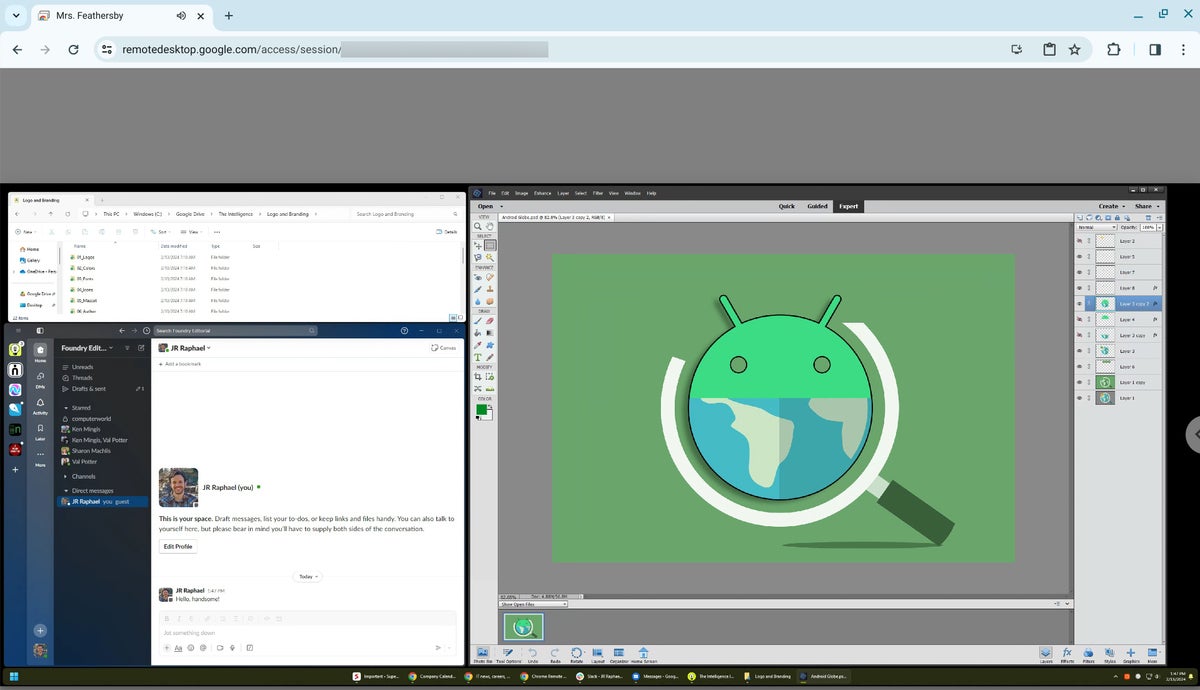 JR Raphael / IDG
JR Raphael / IDGThe host computer’s desktop is fully accessible in a browser tab, with a collapsible panel for advanced commands. (Click image to enlarge it.)
For mobile access, you’ll want to download the Chrome Remote Desktop app for iOS or Android. Provided your phone or tablet is signed into the same Google account you used on your computer, the app will automatically show the remote computer and allow you to connect to it with one quick tap and a typing of your PIN.
You’ll then be able to mouse around on your desktop using your fingers, scroll by sliding in any direction with two fingers together, or zoom by pinching two fingers inward or apart.
In the Android app, a control bar at the top of the screen will let you switch from that default “Trackpad mode” into a “Direct touch mode” — in which every touch on your screen is interpreted by the remote computer — as well as a choice of two combination trackpad-touch modes for the best of both worlds. You can also activate a keyboard mode to pull up your device’s on-screen keyboard and enter text.
Those same controls are available in the iOS Chrome Remote Desktop app, too, though you’ll have to tap a menu button in the lower-right corner of the screen to reveal them.
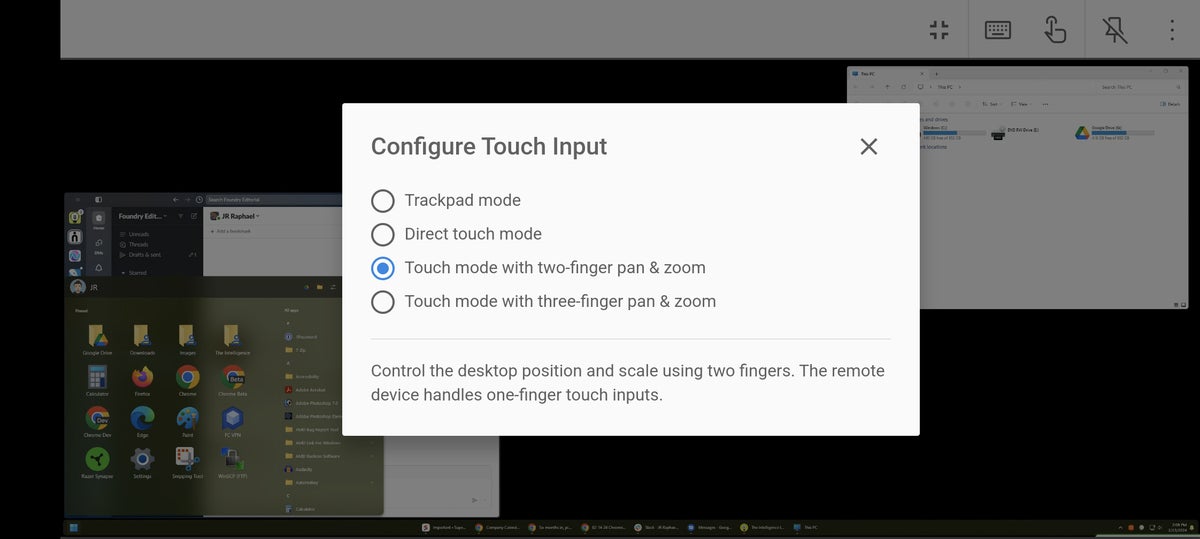 JR Raphael / IDG
JR Raphael / IDGYour entire desktop, at your fingertips — on your phone. (Click image to enlarge it.)
It isn’t the most elegant way to get around a computer — and you probably wouldn’t want to use it for any sort of intensive work — but it can be handy for quick-hit tasks like restarting your system from afar or grabbing a file you forgot to save to the cloud.
Using Chrome Remote Desktop to access someone else’s computer
Step 1: Prepare the computer for connections
If seeing someone else’s screen is what you’re after, the process for setting up Chrome Remote Desktop is slightly different. And since you presumably won’t be physically present at the host computer, you’ll need to provide these instructions to the person who will be there and able to complete this part of the setup.
On the computer you want to be accessed remotely, start by going to the “Support” section of Google’s Remote Desktop web app. Click the circular blue arrow within the box labeled “Share this screen,” then click “Add to Chrome” in the window that appears and confirm you want to install the Chrome Remote Desktop companion extension. (If you don’t see the blue arrow, the extension is already installed — and you’re one step ahead. Give yourself a pat on the back and keep going.)
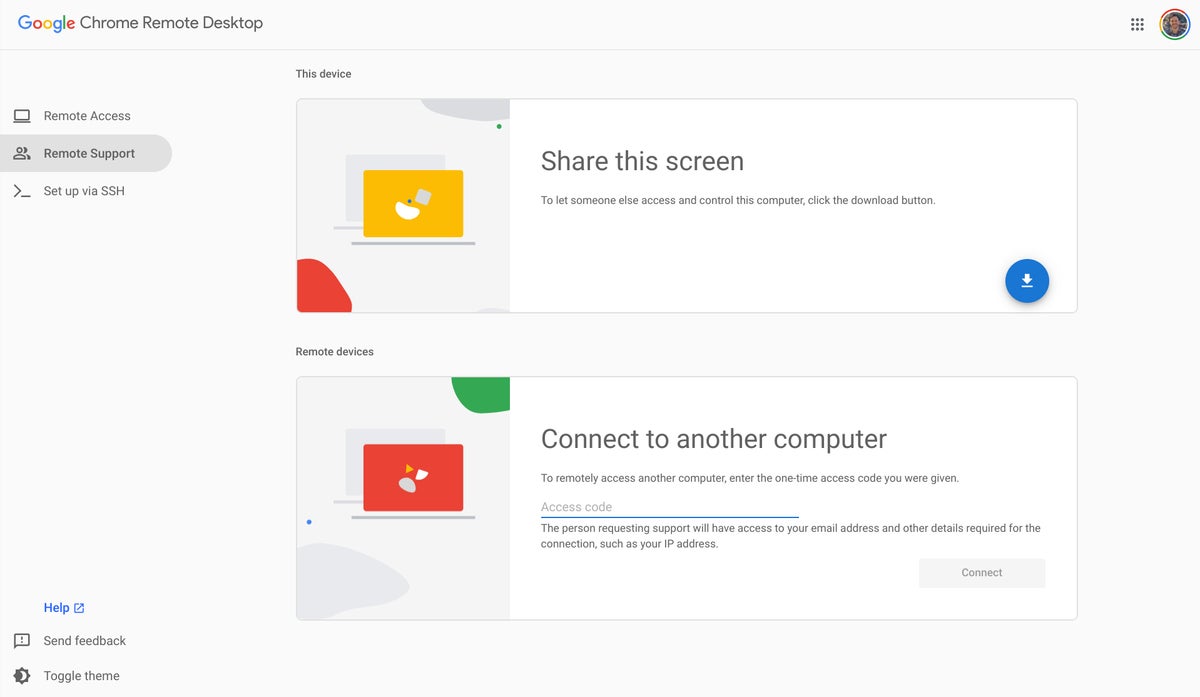 JR Raphael / IDG
JR Raphael / IDGThe setup for a remote support session is slightly different, but the end result is the same. (Click image to enlarge it.)
Go back to your original tab, and you’ll find a prompt instructing you to click a “Generate Code” button in order to give someone else access. (Once again, if you don’t see that button, refresh the page — and it should appear.)
Clicking that button will create a one-time access code that’ll remain valid for only five minutes. Share that code with the person to whom you want to give access — on the phone, in an email or text message, or whatever works best — and then sit back and wait for their connection to begin.
Step 2: Connect to the computer from another desktop
Once you have the access code and are ready to connect, simply go to remotedesktop.google.com/support within Chrome on any other computer. Enter the access code in the “Give Support” box and then click the “Connect” button to begin.
(If you want to connect from a mobile device, you’ll need to open a new tab within Chrome on your phone, check the box in the browser’s main menu to request the desktop version of a site, and then navigate to that same link from there. The Chrome Remote Desktop mobile app works only with connections that are associated with your own Google account, so you won’t be able to use it in this context.)
The person on the other end will have to manually click a button to approve the connection (and macOS users may also have to grant permissions in System Preferences), and then you’ll be connected to their computer and able to click around and control it in the same manner described in the first part of this guide.
Not even remotely difficult — right?
This story was originally published in October 2017 and most recently updated in February 2024.
Copyright © 2024 IDG Communications, Inc.
This story originally appeared on Computerworld

